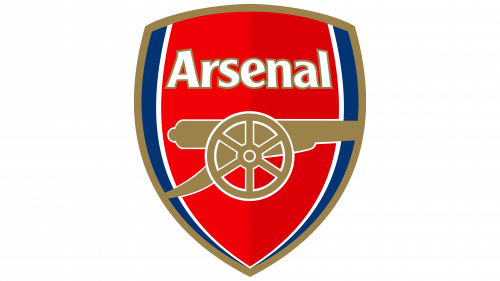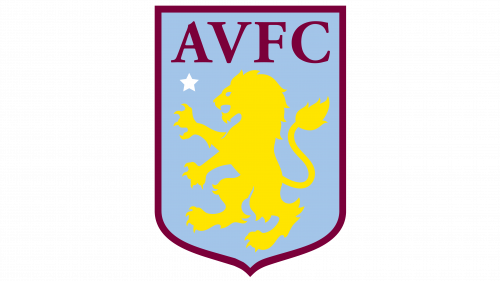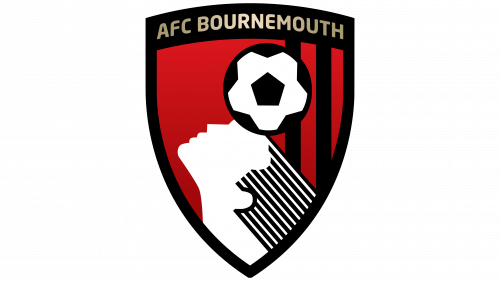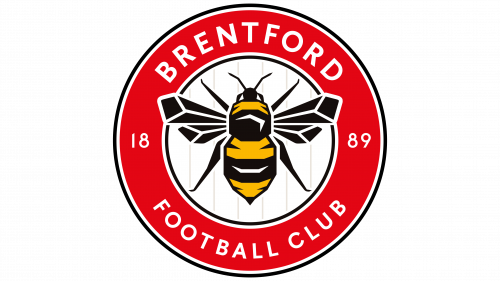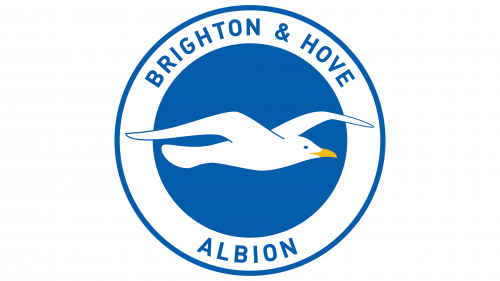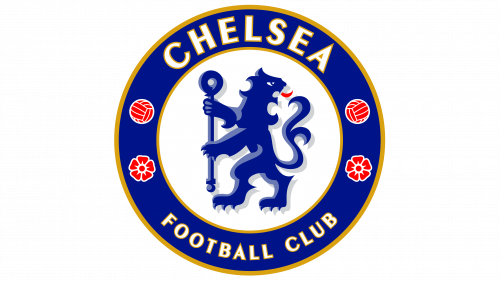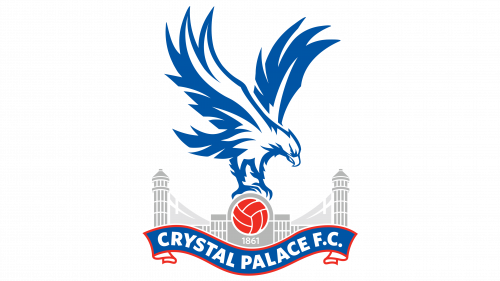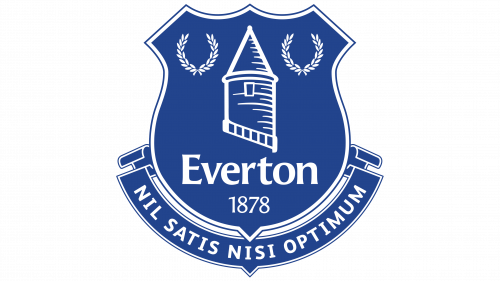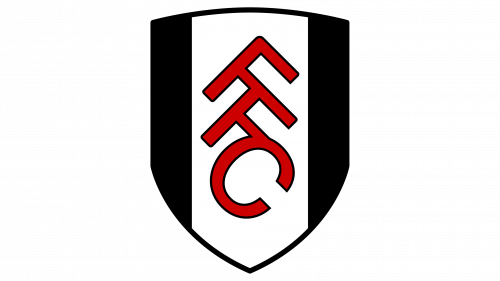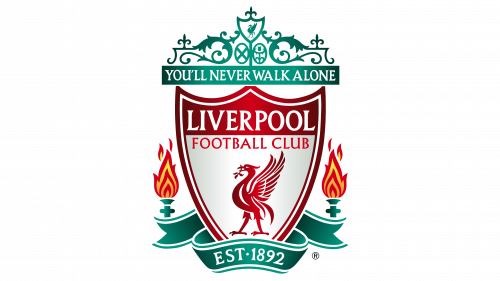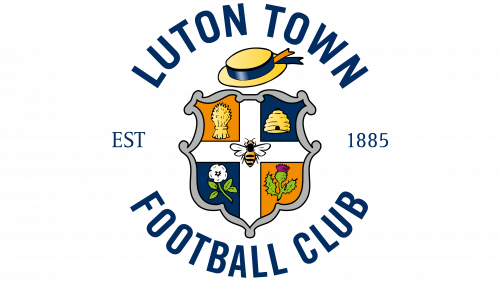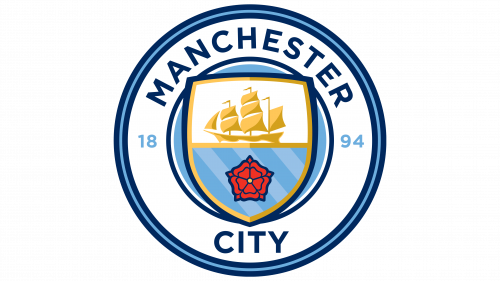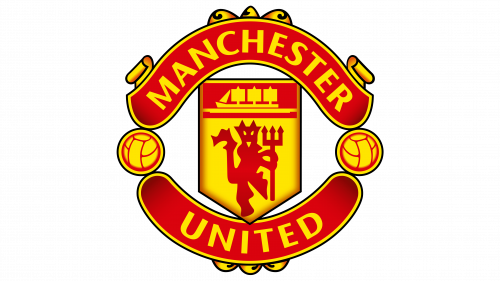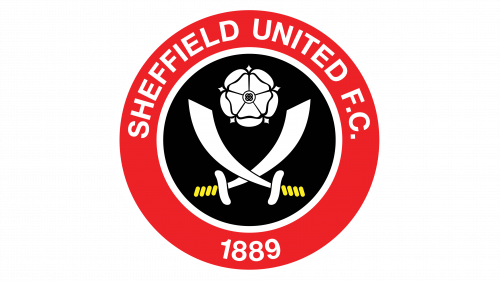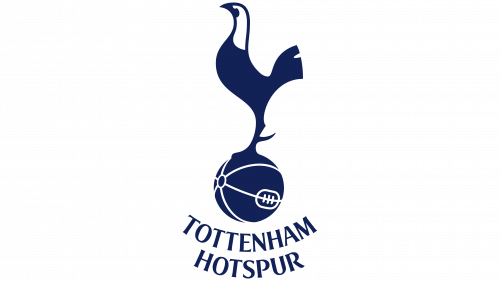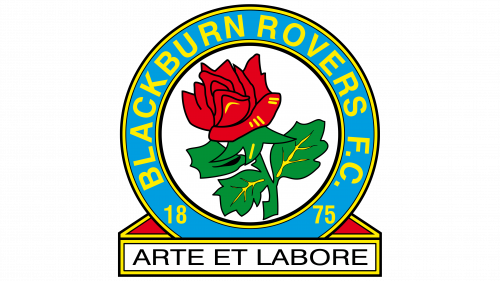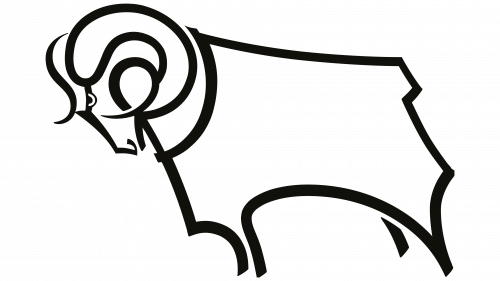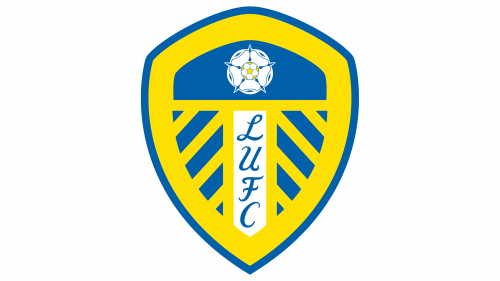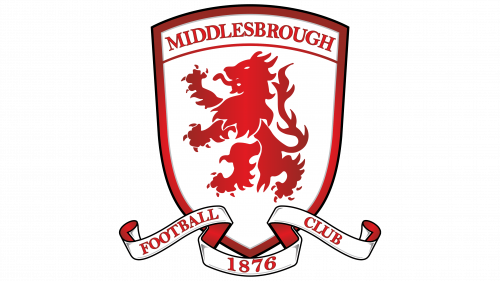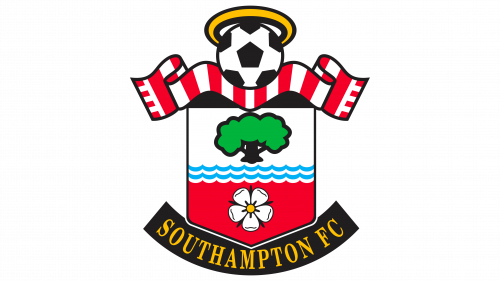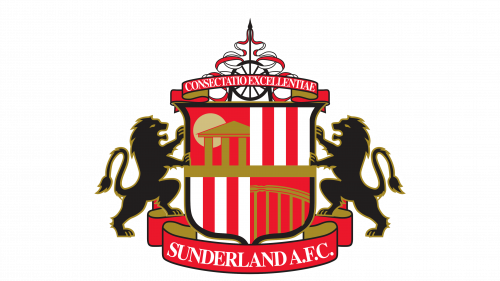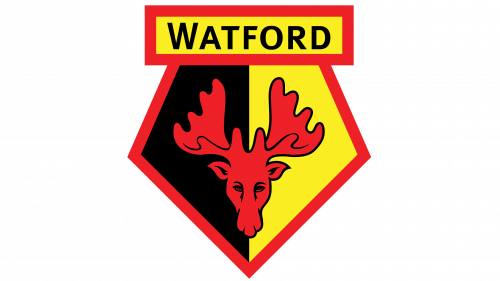For British soccer fans, Premier League team emblems are more than just familiar visuals. These emblems serve not just as branding but as beacons of unity and inspiration for ardent Premier League supporters.
Each team showcases its unique identity through its emblem, which typically includes distinctive colors, iconic symbols, and thoughtful design. These elements are not just aesthetically pleasing; they inspire the players on the pitch and lift the spirits of loyal fans.
Over the course of several seasons, there has been a noticeable shift in the design language of Premier League emblems. While these changes have been influenced by modern design principles, many emblems have retained their foundational elements. Often, these elements point to significant historical events or the cultural heritage of the region they represent.
The emblems of English Premier League teams, like the emblems of educational institutions, have a significant history. This pedigree evokes deep feelings of pride and loyalty not only among the local population of the UK but also among fans around the world.
English Premier League team logos in 2023
EPL emblems represent more than just the development of a soccer team – they encapsulate the essence of entire communities. These emblems weave together historical references, local lore, and the competitive spirit that defines each club.
Like iconic brand logos, Premier League team badges have a dual purpose. Firstly, they serve as a distinctive marker, marking out each team in a league characterized by talent and ambition. Secondly, they are designed to form a deep bond, an intangible connection between the players on the pitch and the sea of fans supporting them.
The passion and affection for these emblems manifests itself in many different ways. It is not uncommon for fans to proudly show their devotion by choosing bright hair colors that echo the emblem of their favorite team or even go a step further by getting tattoos based on the emblem of their chosen EPL team.
Arsenal
Arsenal Football Club has made a name for itself in English soccer for more than a century since it was founded in 1886 as Dial Square. The club has 13 league titles to its credit, as well as a record unbeaten streak and an impressive collection of 14 FA Cups. This impressive record places Arsenal third in the hierarchy of achievements in English soccer.
Arsenal’s reputation is renowned not only domestically but on every continent. The club’s influence extends far beyond England, making it one of the most recognized and revered soccer institutions around the world.
The emblem, dominated by a shield motif, paints a vivid picture using colors that reflect the essence of the Arsenal community. In the center of the emblem, the word “Arsenal” is printed in white lettering, providing instant recognition.
One of the most distinctive features of the emblem is the image of a cannon, which is reminiscent of the early days of the club. This cannon not only symbolizes the firepower and determination of the team but also has its roots in the official coat of arms associated with the Arsenal during its founding years in the 1800s. In its coat of arms, Arsenal Football Club seamlessly blends its storied past with an ambitious vision for the future while maintaining its unique identity.
Aston Villa
Aston Villa Football Club, located in the heart of Aston in Birmingham, boasts a rich history that dates back to 1974. This illustrious club has been crowned Football League Division One champions seven times. The club’s reputation is not limited to England: soccer fans around the world recognize and respect “Villa” for its contribution to the development of sport. Fierce rivalries with neighboring club Birmingham City have further cemented its place in local and national folklore due to the emotional rivalry between the two teams.
Aston Villa’s emblem is the distinct letters “AVFC.” Next to these letters is a star, reminiscent of the team’s European Champions Cup victory in the 1980s. The most striking element of the emblem is the regal lion, a legacy from the era of Scottish manager George Ramsay and the influential William McGregor. This lion serves as a reminder of the club’s proud heritage and the indomitable spirit it represents on the soccer pitch.
Bournemouth F.C
Founded in 1875 and originally known as Bournemouth Rovers, Bournemouth Football Club has carved a niche for itself in the annals of British soccer. Over time, the club earned the affectionate nickname “Poppies” from its loyal fans. This nickname became an indispensable attribute of the team, causing a deep response from the fans and the whole society.
The emblem of the soccer club “Bournemouth” immediately strikes dominant shades of red and black – the corporate colors, in which the team is proudly dressed during matches. The emblem has a circular shape, which is often associated with unity and integrity.
The emblem incorporates the club’s name, further emphasizing its uniqueness. But what stands out are the visual elements that pay homage to the team’s nickname, “Maki.” The characteristic slogan subtly hints at this nickname. On the sides of the emblem are two flowers, made in red and white colors, which emphasizes the connection with the theme of poppies. The central place in the emblem is occupied by a drawing that reminds many of a poppy. The black circle in the center of the emblem, bordered by bright red and white stripes, reinforces this association, further enriching the meaning of the emblem and linking it to the club’s cherished nickname.
Brentford
Brentford Football Club hails from the Brentford area of west London, England, and is firmly embedded in the soccer community. Founded in 1889, the club, affectionately called “The Bees” by its ardent fans, has achieved commendable success, rising to the top echelon of the Premier League in the 2020-2021 season, a testament to its skill and growth in the sport.
Brentford Football Club’s emblem incorporates thoughtful elements that reflect the spirit and heritage of the team.
At the center of the emblem is a bee whose carefully calibrated image echoes the club’s well-known nickname. This is not just a decorative detail but a testament to the club’s identity and connection to the community. In addition, information about the club’s rich history is subtly woven into the emblem, including the year of its foundation.
Brighton & Hove Albion
Brighton & Hove Albion Football Club, founded in the early 1900s, has cemented the name “The Seagulls” in the hearts of many. This nickname is not just affectionate. It signifies the club’s deep connection to its seaside roots, which is elegantly depicted on the emblem in the form of a seagull in flight.
Amidst the many intricate and ornate logos that adorn the emblems of some Premier League teams, Brighton & Hove Albion’s emblem looks more subdued and minimalistic, representing a refreshing change. This emblem, despite its simplicity, has a deep meaning. The gracefully soaring seagull not only represents the spirit and essence of Brighton but also pays homage to its maritime links with the south coast of England.
Throughout the club’s existence, its players have predominantly worn uniforms in shades of blue and white. The Brighton & Hove Albion logo, echoing the choice of several of its peers, contains the full name of the club, fostering a sense of unity and loyalty among fans and players.
Burnley
Burnley Football Club, a well-known English soccer club, has a logo rich in symbolism and history. It is a visual testament to the club’s rich past, reflecting both its origins and the culture of the city it represents.
The original emblem of Burnley Football Club, founded in 1882, featured three red roses intertwined in a shield. This symbol underwent several changes, adapting and evolving with the club itself. Between December 1887 and 1895, the royal coat of arms was displayed on the team’s shirts, a practice that was briefly resumed for notable events such as the 1914 FA Cup final.
A significant change came after Burnley won the First Division in 1960 when the team was granted the right to wear the city’s coat of arms. Between 1969 and 1975, the letters “BFC” appeared on the team’s shirts, and in 1975, the horizontal gold cipher “BFC” was adopted.
In the 1970s, the current emblem emerged, incorporating several elements significant to the town of Burnley and the soccer club. In particular, the logo features the number 1882, signifying the date of the club’s foundation. The lions symbolize royalty and draw inspiration from the city’s coat of arms. The bee, the emblem of industry, points to the local area known as the Beehole end of the ground, while the knight’s helmet refers to two knightly families with longstanding links to Burnley: the Townleys and the Shuttleworths of Gawthorpe.
The logo also features a shuttlecock, symbolizing Burnley’s cotton industry heritage and linked to the Shuttleworth family crest. The hand in the logo symbolizes the town’s motto, “Stick to the Truth,” a principle deeply rooted in local culture and dating back to the Townley family motto, “Tenez le Vraye.” The stork holding the Lacey knot pays homage to the de Lacey family, the medieval owners of Burnley.
The rich tapestry of symbols intertwined in the Burnley FC logo is more than just decoration. It is a carefully crafted representation of the soccer club and the town of Burnley.
Chelsea
Among the pantheon of prominent EPL emblems, the Chelsea Football Club emblem holds a special place, radiating a rich tapestry of history and triumph since its foundation in 1905. “Chelsea have left an indelible mark on English soccer, winning six domestic league titles. Their achievements on the international stage are also commendable: the only English club to have won three major UEFA trophies.
The design of the emblem draws on the heritage of the Chelsea Metropolitan Borough coat of arms. The centerpiece of the emblem is a commanding lion, borrowed from the coat of arms of the Viscount Chelsea, who held the high office of club president. This lion, graceful and fierce, clutches a staff in his hands, a symbolic reference to the Abbots of Westminster.
Each element of the Chelsea Football Club emblem carries historical significance and contemporary relevance. It serves as a testament to the club’s historic past, its current achievements, and promises of future glory, embodying the pride and passion of its fans around the world.
Crystal Palace
Crystal Palace Football Club, located in the Selhurst area of Croydon in South London, stands out for its striking emblem, which features a dynamic eagle in flight. This eagle doesn’t just adorn the emblem but reflects the team’s affectionate nickname, ‘Eagles.’
The modern and original Crystal Palace logo intertwines the club’s history and location. Below the soaring blue eagle is an architectural image of a palace. This symbolizes the club’s name and subtly pays homage to its roots in the Croydon area. What also adds to the uniqueness of the emblem is that the eagle is holding a vintage red soccer, symbolizing the club’s deep passion for the sport.
In a league where emblem designs range from traditional to modern, the Crystal Palace emblem easily stands out among the many logos of the English Premier League.
Everton
Emerging from an era honoring tradition, Everton Football Club’s emblem is a testament to its deep heritage in the Premier League. Founded in 1878, this historic club has shown remarkable consistency, playing in the Football League’s top division for 118 seasons. The club ranks third in terms of all-time points scored, something few can rival.
In the emblem of Everton Football Club, every element is filled with meaning. Central to the emblem is the image of Everton Castle, a structure that has remained synonymous with Everton since the 18th century. This iconic building, located in the heart of the Everton area, serves as a strong link between the club and the local community.
The club’s name, Everton, is prominently positioned to ensure its heritage is preserved. A banner is unfurled beneath it, on which the club’s motto is written in Latin: “Nil Satis Nisi Optimum,” which translates to “Nothing but the best is enough.” This phrase encapsulates the club’s unwavering commitment to excellence on and off the pitch.
Fulham
Fulham Football Club dates back to 1879 and boasts a rich heritage as the longest-running professional soccer team from London. Throughout its existence, the club has displayed formidable skill, competing in the top division of British soccer for an impressive 27 seasons. The team is currently active in the renowned Premier League, further enhancing its reputation.
The club, affectionately referred to as “The Cottagers” and “The Whites” by loyal fans, has these nicknames deeply rooted in its history and tradition. The epithet “Whites” probably comes from the dominant white shade in their home uniforms, symbolizing their identity.
Fulham’s emblem is a masterstroke, but it captures the essence of the club. It is basically a shield with black and white stripes, reflecting the team’s heritage and values. The centerpiece of the shield, located on the widest white stripe, is the acronym “FFC,” standing for Fulham Football Club and artistically represented in contrasting red. It is this shade, albeit with slight nuances, that is present in the team’s official playing uniform, emphasizing the unity of the club’s symbol and its representation on the pitch.
Liverpool
The Liverpool emblem is one of the most iconic symbols of the Premier League, instantly gaining recognition from soccer fans around the world. Initially, the emblem had a significant resemblance to the coat of arms of Liverpool, on which the central figure of the coat of arms was the Roman god Neptune.
Like many symbols that have stood the test of time, the emblem has undergone changes to resonate with its audience. Currently, the coat of arms depicts a bright red feather bird gracefully set within a pronounced shield. This bird, deeply connected to the city’s history, has become synonymous with the soccer club.
On either side of the shield is the “eternal flame,” which serves as a vivid reminder of the club’s unwavering spirit and dedication. Below this majestic emblem, the banner proudly displays the year of the club’s foundation, further emphasizing its historical significance.
Above the shield is the motivating phrase, “You’ll Never Walk Alone”. This slogan has become not just words but the club’s anthem, reminding players and supporters of the shared journey, camaraderie, and undying spirit that defines Liverpool Football Club.
Luton Town
Founded in 1885, Luton Town Football Club has one of the most distinctive logos in the Premier League. Many refer to it as ‘The Hatters,’ which is a tribute to Luton’s rich heritage of hat making, which the club has fully adopted. The club’s emblem features a hat, a testament to the historic craft that once flourished in the area.
Drawing on Luton’s rich heritage of hat making, the club’s emblem is a beacon of local pride. In addition to the hat, the emblem incorporates elements of the official crest of Luton Town Club, emphasizing its deep history. Notably, the emblem includes the year of the club’s founding, allowing fans and observers to appreciate its long history in soccer.
The design may seem classic, but it has an undeniable charm. With its unique and striking appearance, the Luton Town Football Club emblem stands out among the many Premier League logos.
Manchester City
Manchester City, which originated in the 1880s as St. Mark’s, has since developed into one of the top teams in the Premier League. Its prominence in the league is backed by the club’s rich history, as evidenced by the various modifications to its emblem over the decades.
Manchester City’s emblem has undergone several transformations over the course of its existence. However, each of them sought to embody the essence and history of the hometown. The current design subtly yet effectively reflects Manchester City’s heritage. It prominently features the famous Manchester City coat of arms.
The design of the current emblem is characterized by a circular structure with a shield in the center. Around the central shield on the white perimeter is the name of the soccer club. If you go into the details of the shield, you can see the image of a majestic golden ship. This ship symbolizes Manchester’s rich maritime history. The ship is complemented by the iconic red rose of Lancashire, which gives the emblem a touch of local culture and history. These elements make up a story of tradition, pride, and soccer excellence.
Manchester United
Manchester United Football Club, hailing from the Old Trafford area of Greater Manchester, is a distinct and formidable figure in the soccer world. Despite sharing geographical roots with Manchester City, they are very different clubs, each with their own rich historical legacies. Manchester United, colloquially referred to as the Red Devils traces its history back to 1878 when it was known as Newton Heath LYR Football Club.
Manchester United has risen to prominence amongst the elite, winning 20 league titles. This feat puts them at the pinnacle of English soccer, sharing the honor of the joint record for the most league wins.
If you delve into the symbolism of the Manchester United emblem, you’ll find that elements of its design are deeply connected to the local history and heritage of the club itself. The emblem was inspired by the coat of arms of Manchester City Council. However, various elements of the original design have changed over the years, and the ship under full sail remains unchanged, a testament to Manchester’s maritime heritage. The ship is complemented by an image of a devil, representing the club’s enduring nickname. This nickname, chosen over time, has become synonymous with the club and has become embedded into the fabric of Manchester United’s identity. The emblem, in its entirety, embodies the pride, history, and aspirations of a club that continues to inspire legions of fans around the world.
Newcastle United
With a history dating back to 1892, Newcastle United Football Club calls Newcastle-upon-Tyne their home. This iconic club has been involved in Premier League competition for almost the entirety of the league’s existence, only conceding three times. In its illustrious history, the club has won four honorary league titles and has also won the FA Cup six times.
The Newcastle United badge is not just a design but a symbol with a deep history. Drawing inspiration from the 14th-century Newcastle coat of arms, the badge serves as a testament to the rich heritage and cultural tapestry of the region. Each element intricately carved into the emblem tells its own story.
The presence of a lion holding a flag is not just a decorative detail but an echo of strength and leadership. At the same time, the golden shield with alternating black and white stripes repeats the iconic color of the club’s jersey and reinforces its uniqueness. The twin seahorses on either side of the shield have their own significance, perhaps symbolizing Newcastle’s maritime history and its connection to the River Tyne.
Among the pantheon of Premier League emblems, each telling its own unique story, the Newcastle United logo stands out. Its complexity, detail, and depth of meaning make it instantly recognizable and deeply revered among soccer fans and historians alike.
Nottingham Forest
Nottingham Forest Football Club holds a special place in the English Football League as the oldest professional soccer club. This venerable status is reflected in the club’s emblem, which differs from the common design in modern soccer.
The team, often referred to as “Forest” or affectionately nicknamed “Tricky Trees,” is active in the EFL Championship. The nickname is not just a casual reference but a deep connection to the essence of the club and its roots.
The emblem of Nottingham Forest Football Club demonstrates its inherent simplicity and directness. The central element of the emblem is a tree in bright red. This symbol not only refers to the nickname of the club but also symbolizes the resilience and vitality of the team. Underneath the tree is a tasteful word mark, further emphasizing the club’s identity and heritage. All of these elements combine to create an emblem that is timeless and reflects the club’s rich heritage.
Sheffield United
Having secured a place in the Premier League after an outstanding performance in the 2022-2023 EFL Championship, Sheffield United has established a firm place in professional soccer circles. Often referred to as ‘the Blades,’ the name provides a glimpse into the club’s symbolism.
The Sheffield United emblem is a confirmation of its nickname, featuring an eye-catching design. In the center of the emblem are two intertwined sabers, whose blades form the letter X, located on the contrasting cloth of a deep black circle. Next to these powerful martial symbols is a rose, a symbolic image often associated with the United Kingdom’s deep heritage.
The genesis of the Sheffield United symbol can be traced back to the city’s coat of arms, reflecting the club’s deep connection to Sheffield. After the arrival of Jimmy Sirrel to the club’s management, the design of the emblem underwent a dramatic change. Featuring the iconic Yorkshire rose, a striking red and black color combination, and symbolic double blades, the updated crest was the creative calling card of Jimmy Hagan, a former player at the club.
Tottenham Hotspur
Tottenham Hotspur Football Club is an enduring testament to the history of soccer. The emblem of the club, located in the bustling Tottenham district in the heart of London, is symbolized by a distinctive rooster perched confidently on a soccer ball. Below him is the inscription “Tottenham Hotspur,” giving the emblem an additional personality.
Since 1921, the emblem of the soccer club “Tottenham Hotspur” always depicts the same cockerel, which emphasizes the club’s commitment to tradition and its rich past. The name “Hotspur” was inspired by Harry Hotspur, who was famous for his strategy on the battlefield. During battles, he would usually spur his horse by quickening his stride, which was the basis for his nickname “Hotspur.”
The term “spurs” reveals an interesting connection to fighting roosters. These birds, known for their vigor and tenacity, explain the choice of the club’s emblem.
West Ham United
Based in Stratford, East London, West Ham United is a club with over a century of history. The club dates back to 1895, when it was known as Thames Ironworks. In its more than 125-year history, West Ham United has made soccer history by winning the FA Cup three times and taking part in two major European finals.
West Ham United’s emblem is closely linked to its origins. It was inspired by the flag of the Thames Ironworks team, signifying its founding. Complementing the rich history symbolized by the flag, the emblem also includes two golden hammers. These hammers are not just a decorative element; they symbolize the club’s widely known nickname, “The Hammers.” This nickname is linked to the shipbuilding heritage of Thames Ironworks, where craftsmen used hammers in the process of building ships.
The shield-shaped design of the emblem reflects the spirit of tradition and heritage that characterizes many EPL logos. This design provides continuity with the club’s rich past. It unites West Ham United with other clubs in the English Premier League, maintaining a collective sense of identity and heritage.
Wolverhampton Wanderers
The Wolverhampton Wanderers club emblem is distinctive. Unlike the usual for many soccer clubs’ symbols and motifs, the “wolves,” as they are popularly called, chose a less beaten path.
Founded in 1877, this venerable soccer club has an emblem that depicts a sharp, detailed wolf’s grin encased in the straight lines of a hexagon. This design is in stark contrast to the heraldic motifs that are commonly found on the emblems of many of the EPL’s top league teams.
A closer look at the color scheme of the emblem reveals an interesting story. The striking combination of gold and black is not just an aesthetic choice but a reference to the city’s cherished motto: “Out of darkness comes light.” Even in the design, the club emphasizes its deep connection to local culture and tradition.
Former Premier League teams
Outside of the Premier League lineup for 2022, there are many iconic logos representing different clubs. Each emblem tells a different story, with a rich history, local culture, and footballing prowess woven in.
The Champions League features many clubs with a rich history, standing a step below the Premier League. The emblems of clubs in this league have evolved, and each transformation can be linked to important moments in the club’s history or changes in local identity.
One club’s emblem features a boat, signifying the city’s maritime history and its deep connection to the river that runs through it. The emblem of a club located in a mining town features a pickaxe and helmet, symbolizing the hard work of the locals.
In another league, a club that traces its lineage back to the early 20th century has depicted a phoenix on its badge, symbolizing rebirth and resilience in difficult times. The phoenix, like the legendary bird, is a testament to the club’s ability to overcome challenges.
Some logos are more abstract in nature and include geometric shapes or complex patterns. Such modern emblems symbolize a new era or direction for the club, combining modern aesthetics with traditional values.
Moving further down the English soccer pyramid, even in the lower leagues, club emblems remain a central element of identity. Whether the symbol of a local landmark, animal, or historical figure, these emblems serve as a badge of honor and pride for players and fans alike.
While Premier League clubs often attract attention with their world-famous emblems, diving into the deeper levels of English soccer reveals a wealth of symbolic art. Each icon, regardless of league, embodies a story to be told, a history to be honored, and a future to be built.
Blackburn Rovers
Blackburn Rovers Football Club, founded in 1875, has a rich history marked by its significant role as a founding member of the Football League and Premier League. This illustrious club currently enjoys a successful run in the EFL Championship.
The Blackburn Rovers club emblem is a striking reflection of a rich heritage intertwined with the classic traditions of English soccer. Central to the emblem is the emblematic Lancashire rose, a symbol that is deeply in tune with the history and pride of the region. The club’s name is placed prominently, complementing the rose that adorns the badge design. An inspirational motto in Latin, which translates to “Through skill and labor,” adorns the emblem, an eloquent reminder of the club’s ethos and commitment to excellence on and off the field.
Burnley
Burnley Football Club, founded in 1882, has a rich heritage deeply intertwined with the annals of English soccer. Located in the heart of Burnley, Lancashire, the club pioneered professionalism in English soccer and left its mark by winning the English Championship title twice and the prestigious FA Cup once. These achievements confirm the team’s rich heritage and its significant contribution to the sport.
Burnley Football Club’s emblem is a tapestry of history, art, and local significance. Drawing inspiration from the city’s coat of arms, the emblem embodies stories of a bygone era that still resonate with the community today. One can’t help but notice the stork gracefully perched at the zenith of the coat of arms, symbolizing the influential Starkey family. This family, once the backbone of Burnley society, is immortalized in this symbolic image.
The stork is not just a figure; it also holds a Lacy knot in its beak, not just a piece of jewelry but a historical trace of the de Lacy family, who played a key role in Burnley in medieval times.
The banner at the base of the crest proudly displays the team name, which is an integral part of numerous English Premier League emblems. All of these elements combine to make the Burnley FC emblem not only a symbol of the soccer club but also a testament to the rich history, noble families, and medieval tapestry of the city of Burnley. Throughout the games, triumphs, and trials, this emblem remains a beacon of pride for both the team and its ardent supporters.
Derby County FC
Derby County Football Club, which traces its history back to 1884, holds a significant place in the Championship, the second tier of English soccer. The nickname “The Sheep” has influenced the symbolic representation of the club in the English Premier League.
There are many emblems in the league, each with its own history and design elements, but the Derby County emblem stands apart. Its appeal lies in its simplicity, cleanliness, and at the same time appealing. The emblem features an elaborate silhouette of a ram, symbolizing the team’s mascot. The design of the emblem exudes a sense of modernism, emphasizing a refined and contemporary aesthetic.
Leeds United
Leeds United is a strong testament to its soccer heritage. Although this club, founded in 1919, may seem relatively recent compared to its contemporaries, it has undoubtedly left an indelible mark on English soccer.
Based in the bustling city of Leeds, this team has survived all the twists and turns of the soccer world. A model of resilience, the club climbed to the Premier League from the EFL Championship in the 2019-20 season, further cementing its reputation on the national stage.
Leeds United’s emblem is a beacon of identity for its loyal fans. It is a harmonious combination of yellow and blue, forming a shield that radiates tradition and modernity. In the center of the shield, the abbreviation “LUFC” gracefully emerges in a smooth cursive font. A striking element of the logo is the white rose of York, an emblematic symbol reflecting the region’s deep history and pride.
Leeds United’s emblem is a visual narrative. It weaves together the club’s journey, connection to the city of Leeds, and an unwavering commitment to footballing excellence.
Leicester City
The Leicester City badge is a fascinating story that reflects the evolution of the club. Founded in 1946, the club’s emblem features an ever-present image of a fox, which resonates deeply with its roots and local traditions.
Leicester City’s emblem, especially in the English Premier League era, is a harmonious blend of simplicity and modernity. It stands out, encased in a circular design in a rich blue color. The club’s name is embossed around the circle, and it is depicted in a hue that seamlessly complements the background.
The emblematic fox is not just an aesthetic choice but a deep connection to Leicester’s local ethos. This animal has become synonymous with the area, as it has a thriving fox population and a long tradition of fox hunting. Gradually, this association became embedded in the club’s identity, earning it the affectionate nickname ‘The Foxes’.
The emblem is given additional significance by the cinquefoil on which the fox sits majestically. This design element bears a striking resemblance to the one on Leicester’s official coat of arms. Every nuance of the emblem – from the cute fox to the emblematic cinquefoil – tells an interesting story.
Middlesbrough
Middlesbrough Football Club, from the North Yorkshire town of Middlesbrough, is a beacon in professional soccer. Their ambitions and talents are currently being tested in the second tier of the English Football League. A notable moment in the club’s history is that they became one of the first Premier League teams in 1992.
The emblem of Middlesbrough Football Club testifies to its rich history. The coat of arms, designed in the form of a shield, clearly displays the club’s name at the top and bottom. At the center of the symbolism is a majestic red lion, evoking a sense of pride and history. This lion is similar to those that adorn the England national team crest, reflecting a shared heritage and passion for the sport.
Norwich City
Norwich City Football Club, hailing from Norwich, colloquially referred to as “the yellows” or “the canaries,” has a rich history dating back to 1902. There have been many victories on their footballing journey, such as their recent promotion to the Premier League in the 2021-22 season. To add to this, they have won the League Cup twice and an impressive third place in the Premier League the previous season.
Norwich City Football Club’s emblem draws inspiration from the city’s historic association with the breeding of canaries. This age-old association with canaries influenced the team’s nickname and determined the club’s official colors of bright green and yellow. The emblem features a canary, which symbolizes Norwich’s history and the spirit of the soccer club.
Southampton
The emblem of Southampton Football Club is a testament to its deep history and cultural significance. Founded in 1885, the club has grown and evolved, and with it, its symbolism.
Initially, Southampton players took to the pitch without an emblem adorning their shirts. Instead, they relied on the city’s coat of arms, a symbol that reflected the essence of the area and its rich heritage. This emblem was not just a logo but a nod to the city’s past and a symbol of its enduring spirit.
Over time, the club needed a clearer and more recognizable logo that reflected its identity and aspirations. Drawing inspiration from its past, the club’s updated emblem incorporates elements of the original Southampton coat of arms. The centerpiece of the updated emblem is a soccer ball surrounded by a golden halo, a subtle allusion to the club’s nickname, “The Saints.”
The emblem now features a scarf – a common accessory among soccer fans, symbolizing their unwavering support and passion. Alongside this is the full name of the club – “Southampton Football Club,” which confirms its identity in the competitive world of soccer. The emblem, with its bright colors and clear design, is not just a badge but a beacon of pride that unites players and fans.
Sunderland
The association soccer club Sunderland, which traces its history back to 1879, occupies a worthy place in the annals of English soccer. The team, playing in the third echelon of English soccer – League 1, has a rich history and boasts several championships in the highest league. The club’s achievements include winning the FA Charity Shield in 1936.
The emblem of Sunderland Football Club has a deep tradition and draws inspiration from the coat of arms of the city of Sunderland. Although the official symbol of the city was a black cat, the soccer club decided to develop this symbolism. The lone black cat was artistically reinterpreted into two majestic lions. This transformation not only gives the club’s emblem a special flavor but also represents the strength and unity of the team on the soccer field.
Watford
The emblem of the team “Watford,” playing in the English Premier League, is not like the others. It does not repeat their popular nicknames: “Hornets” or “Yellow Army”. This club, which traces its history back to 1881, proudly represents its hometown of Watford, Hertfordshire.
The emblems of Watford Football Club show the constant influence of the symbolism of the town in which it is based. The current emblem intriguingly depicts a stag’s head framed by a geometric diamond-shaped pentagon. The club’s name, Watford, sits above the emblem and is in large sans-serif font in upper case.
This modern visual identity is designed to be memorable and distinctive. This design strategy allows Watford to maintain a unique position among the many EPL teams.
Conclusion on Premier League team logos
The Premier League, known around the world, boasts logos that have become symbols that have resonated with fans around the globe. These emblems representing each team are not just designs but deeply rooted symbols that carry the club’s history, heritage, and aspirations. Each entry of a soccer club into the Premier League is not only a change to the squad but also an addition to this tapestry of iconic emblems that fans hold dear.
Even when teams move from one league to another, the essence and meaning of these emblems remain the same. As the new season arrives, fans year after year seek to purchase the latest variations of their favorite team’s emblems. Wearing jerseys, scarves, and other paraphernalia with these logos, fans express their unwavering devotion by painting stadiums in bright colors and team symbols. This ritual, almost sacred to many, emphasizes the integral role these logos play in English soccer.
